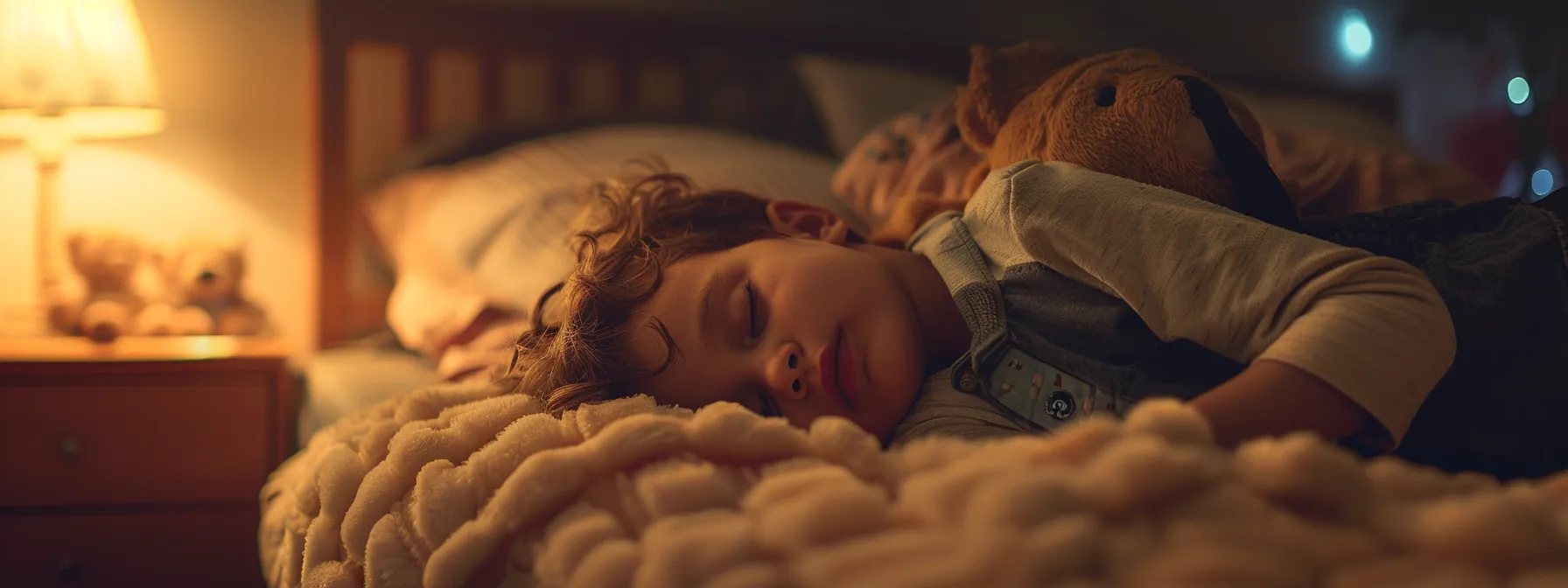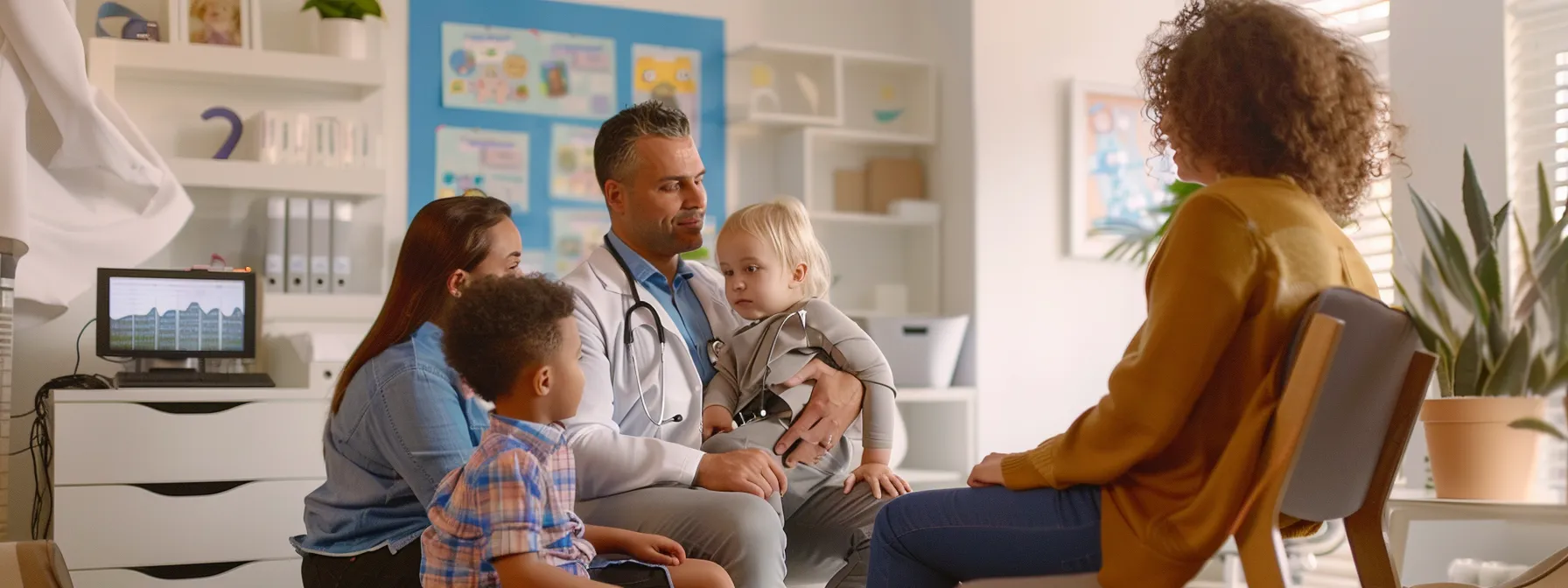Are you worried that your child might not be getting enough restful sleep? Child sleep apnea is more common than many parents realize, and it can significantly affect their well-being. In this post, readers will learn to identify common signs and symptoms of child sleep apnea, recognize indicators across different age groups, and understand the importance of early detection. By the end, parents will feel more equipped to identify potential issues and seek professional help, ensuring their child gets the quality sleep they deserve.
Key Takeaways
- Recognizing symptoms of child sleep apnea is crucial for timely intervention and treatment
- Excessive daytime sleepiness may indicate underlying sleep issues and affect a child’s behavior
- Sleep apnea can affect children of all body types, not just those who are overweight
- Monitoring sleep patterns can help parents identify potential problems early on
- Consulting a healthcare provider is essential when observing signs of sleep apnea in children
Understanding Child Sleep Apnea Symptoms and Common Indicators
Child sleep apnea is a serious condition that affects breathing during sleep, which can impact overall health. Understanding its symptoms is crucial, as issues like snoring and difficulty breathing through the nose can indicate potential problems. This section will cover common indicators of sleep apnea in children, including risk factors and how they may relate to issues like blood pressure and ear complications. If you suspect your child may be affected, consider consulting a burlington dentist or request appointment with a healthcare provider to discuss possible treatments.
Defining Child Sleep Apnea and Its Impact on Health
Child sleep apnea is a condition where a child’s breathing is interrupted during sleep, leading to potential health issues. It can affect overall well-being by causing disruptions in sleep patterns, increasing risks for problems like asthma, and impacting growth and development. Parents should monitor symptoms and consider discussing any concerns with a health care provider, as timely intervention is essential for effective management, which could include medication or guidance on addressing jaw alignment.
Identifying Key Symptoms of Child Sleep Apnea

Notable signs of child sleep apnea can appear during sleep, such as snoring and mouth breathing, while other indicators may arise during the day, like excessive daytime sleepiness. Behavioral changes often link back to the disruptions caused by this condition, including difficulties in concentration. Parents are encouraged to monitor their child’s symptoms, as a polysomnography exam can help identify issues like elevated carbon dioxide levels and provide insights using specialized sensors.
Notable Signs During Sleep
During sleep, several key symptoms can indicate child sleep apnea, including loud snoring and irregular breathing patterns. Parents may notice their child experiencing pauses in breathing, which can be concerning as it relates to potential issues like failure to thrive or irregular heart rate. Early diagnosis is crucial, especially if there’s a family history of genetics that could contribute to these symptoms, as this can help manage any undue pressure on the child’s overall health and well-being.
Common Indicators Observed During the Day
Throughout the day, parents may notice their child exhibiting signs of sleep apnea, such as shortness of breath or increased irritability. These symptoms can stem from nighttime issues like snoring or inflammation of the airways, leading to potential risks in a child’s health and behavior. If a child appears excessively tired or struggles with concentration, it’s important to discuss these observations with a healthcare provider, who can help determine whether further assessment or a visit to an emergency department is necessary for proper care.
Behavioral Changes Linked to Sleep Apnea
Children with sleep apnea often display noticeable behavioral changes, primarily due to fatigue from disrupted sleep. This fatigue can lead to difficulties in concentration, irritability, and mood swings. Additionally, increased carbon dioxide levels during sleep due to airway obstruction may impact a child’s cognitive function, making it essential for parents to consult with a primary care provider. Therapy options, such as tailored sleep strategies, can help manage these symptoms effectively.
Recognizing Symptoms in Different Age Groups

Recognizing signs of child sleep apnea varies across age groups. Infants may show symptoms like irregular breathing or mouth breathing during sleep. As children transition into the toddler stage, irritability and excessive daytime sleepiness can become apparent, possibly connected to issues like childhood obesity and diet. Older children might experience concentration difficulties, impacting their brain function and overall well-being. Each age group presents unique indicators that require attention from caregivers.
Signs in Infants
Signs of sleep apnea in infants can include irregular breathing patterns, such as pauses in breathing or labored breathing that may be linked to throat issues. These symptoms can lead to significant sleep deprivation, affecting an infant’s overall health and well-being. Parents who notice these signs, along with other indicators like increased irritability due to allergies, should consider discussing their concerns with a healthcare provider and may want to request an appointment with a pulmonology specialist for thorough evaluation and guidance.
Symptoms in Toddlers
Toddlers with sleep apnea may exhibit a range of telltale symptoms that can affect their behavior throughout the day. These little ones might show signs of irritability, have trouble concentrating, or experience excessive daytime sleepiness, all of which can stem from disrupted sleep patterns. The American Academy of Pediatrics recommends that parents seek guidance from a physician assistant or pediatrician if they observe these issues, as timely evaluation may lead to appropriate treatment options, including the potential for surgery or the use of positive airway pressure devices to improve breathing during sleep.
- Irritability
- Difficulty concentrating
- Excessive daytime sleepiness
- Potential need for surgery
- Use of positive airway pressure devices
- Consultation with a physician assistant
- Recommendations from the American Academy of Pediatrics
Indicators in Older Children
Older children may show signs of sleep apnea that manifest in how they behave during the day and their overall health. Symptoms such as sleepwalking, excessive daytime sleepiness, and trouble with concentration can indicate ongoing sleep issues. Research suggests that factors like muscle tone and weight may further complicate these symptoms, making it essential for parents to monitor their child’s sleep habits and seek support from a healthcare provider if they notice these specific behaviors.
The Importance of Early Detection

Recognizing child sleep apnea early is crucial for effective treatment. Caregivers need to monitor signs closely, as delayed diagnosis can impact oxygen levels and overall health. This section will discuss the consequences of waiting too long to address the issue, including potential complications related to neck alignment and developmental delays. Additionally, understanding how medical history plays a role can aid in timely intervention.
Why Timely Recognition Matters for Treatment
Timely recognition of child sleep apnea is crucial because it allows for effective treatment strategies that can significantly improve a patient’s quality of life. For example, if an infant is experiencing excessive daytime sleepiness or signs of rhinitis, addressing these issues promptly can prevent further complications. A timely diagnosis may even lead to the use of machines like continuous positive airway pressure (CPAP) devices that enhance breathing, thus providing much-needed relief for both the child and their caregivers.
- Addressing excessive daytime sleepiness can prevent further complications.
- Prompt treatment helps improve a patient’s quality of life.
- Using machines like CPAP devices can enhance breathing.
- Recognizing symptoms early can lead to better outcomes.
Consequences of Delayed Diagnosis
If a child with sleep apnea doesn’t get diagnosed on time, it can lead to serious health issues down the road. For example, untreated symptoms might cause disruptions in growth, increased weight gain, or other complications that require interventions like a CPAP mask or even surgical options. Parents should consider discussing any concerns with a nurse practitioner or health care provider, as early detection can lead to effective weight loss strategies and improved quality of life for their child.
Exploring Common Misconceptions
Many parents hold misconceptions about the symptoms of child sleep apnea. Common myths, such as thinking nasal congestion is the main issue, can lead to misunderstandings in diagnosis. It’s essential to know that evaluating factors like the position of the tongue and conducting a thorough physical examination by a physician can provide clearer insights into a child’s health. This section will clarify these misunderstandings and explore the importance of accurate evaluation for proper diagnosis.
Myths About Child Sleep Apnea Symptoms
Many parents mistakenly believe that only overweight children are at risk for sleep apnea, overlooking other important factors. While extra tissue in the throat can contribute to airway obstruction, it’s crucial to recognize that children of all body types can experience symptoms like choking or snoring during sleep. Understanding that sleep apnea can affect any child, regardless of their weight, allows parents to be more vigilant in monitoring their child’s sleep patterns and addressing any concerns with a healthcare provider.
Clarifying Misunderstandings in Diagnosis
Understanding child sleep apnea can be tricky, especially with many misconceptions about its diagnosis. Some parents may think that only overweight children are at risk, but that’s not the case—any child can experience symptoms like snoring or gasping during sleep, regardless of weight. To get an accurate diagnosis, it’s important for caregivers to have their child evaluated by a healthcare professional who considers various factors, including airway structure and sleep patterns, rather than relying solely on general assumptions.
Seeking Professional Help for Symptoms

When parents notice signs of child sleep apnea, knowing when to consult a healthcare provider becomes essential. This section will cover how to prepare for an appointment, including tips on symptom tracking and questions to ask your provider. These steps can help ensure effective communication and a comprehensive evaluation of the child’s health.
When to Consult a Healthcare Provider
Knowing when to consult a healthcare provider about child sleep apnea symptoms is key to ensuring a child’s well-being. If parents notice signs like loud snoring, pauses in breathing, or excessive daytime sleepiness, it’s wise to schedule an appointment. These symptoms can indicate underlying issues that, when addressed early, can lead to better health outcomes and improved quality of life for the child.
Preparing for Your Appointment
Preparing for an appointment about potential child sleep apnea symptoms can make a big difference in the outcome. Parents should jot down any observations, like frequent snoring or excessive daytime fatigue, and gather information on the child’s sleep patterns. This preparation helps the healthcare provider assess the situation effectively, ensuring a thorough evaluation and the best care possible.
- Write down symptoms such as snoring and daytime sleepiness.
- Note any changes in behavior or concentration.
- Bring up any family history of sleep issues.
- Prepare questions to discuss possible diagnoses and treatments.
Conclusion
Recognizing the common signs of child sleep apnea is crucial for ensuring a child’s health and well-being. Parents should be vigilant about symptoms such as loud snoring, breathing irregularities, and excessive daytime sleepiness, as these can indicate serious underlying issues. Early detection leads to timely intervention, which can improve a child’s quality of life and overall development. Monitoring these signs and consulting a healthcare provider can significantly reduce health risks associated with sleep apnea.
At The Burlington Dentist, we know that you want to be someone who can breathe clearly and live without the constant burden of airway symptoms. In order to do that, you need an optimized airway that functions properly despite allergic reactions. The problem is that airway problems silently reshape your airways, which makes you feel constantly congested, exhausted, and frustrated with persistent breathing difficulties.
We believe everyone deserves to breathe freely without letting allergies control their life. We understand how chronic allergies can impact every aspect of your daily activities and sleep quality, which is why Dr. Bethaney B. Brenner has developed a comprehensive approach that addresses both allergy symptoms and airway health.
Book Your Consultation Today!
Dr. Bethaney B. Brenner DMD
8 Milford St, Burlington, CT 06013
Related Articles
Sleep Apnea Symptoms in Children, Signs of Child Sleep Apnea, Identify Sleep Disorders in Children, The Importance of Sleep Studies, Kids Airway Quiz, Pediatric Sleep Apnea, Allergies and Airway, Crooked Teeth and Airway, Bedwetting and Airway, ADHD and Airway, The Vivos Treatment, Sleep Apnea 101





